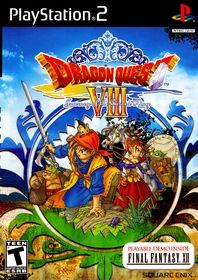Akira Toriyama
Dragon Ball years, video games

Pola & Roid, Dragon Boy
The huge success didn't make Akira drop his favored format he felt most comfortable with - that is, short stories. In 1981, he was voted as one of the ten Shueisha artists most liked by its readers and that enabled him to write a manga which would later be published by the magazine and compete against the other 9 (Toriyama soon won that contest).
That end result was called Pola & Roid and it was about an interplanetary taxi driver Roid, who encounters a girl named Pola. She is engaged in conflict with bad Emperor Gagambo and very soon he gets too.
From there, many interesting things start to happen. In the finale, Arale (main character from Dr. Slump) makes an appearance... sort of.
After two more stories, he switched magazines temporarily and the four next ones were released in another Shueisha publication - the now defunct Fresh Jump.
There, another manga Dragon Boy was publicised. Its main protagonist is Tang Tong. Living in Sen, he is learning martial arts under his father until he receives an order to transport a princess to the Ka land.
Again, it was clear that influences for his later works, both in the story and even in title, come to shape. From there, Dragon Ball was only a small step away.
Bird Studio formation, assistants
As expectations grew and large volumes of his works were now absorbed by publishers, Toriyama needed to create a professional environment from which he could work independently. As a result, Bird Studio was created. The name was a wordplay (another characteristic of his work) - 'tori' means 'bird' in Japanese.
Akira always preferred to work alone and have full control over the final product. Even when he was hiring someone, it was only one person at a time. Throughout his entire career, he only had had two people directly helping him.
The first one was Hisashi Tanaka (known under his HISAwaSHI alias), who came to assist Akira with Dr. Slump and left in its middle phase.
The second one, Takashi Matsuyama (not to confuse with the actor with the same name), took over from Tanaka, working on the second half of that manga, the entire Dragon Ball series and everything done since then. At the moment of writing this article, he still works by Toriyama's side.
Video games
Besides drawing and writing mangas, Toriyama spent considerable amount of time helping with development of video games. His specialty was character development - consulting with scriptwriters to make for realistic and entertaining personages in games.
JRPG creators were mad about this aspect and the effort put into nailing it was really paying off during the 1990s - playing a good jRPG game was like reading a top quality book.
One of the best games of this type, and one of the best video games in history overall, was Chrono Trigger, and for it Square attained Toriyama's services.
As old as Chrono Trigger is, the writer's involvement in video games had had started 10 years before that game was released. Enix, which was re-steering to the gaming market after company's initial financial flops elsewhere, decided to create a title called Dragon Quest.
They went out of their way to provide original game that would stand out from the crowd. For character and monster graphics, they wanted something equally fresh and for that they turned to a man at the top of his game - Akira Toriyama.

Everyone in the team did a fantastic job and the game was such a hit that it quickly made Dragon Quest a permanent recognizable franchise in the gaming industry. For single-handedly starting a new genre which to this day we know as jRPG, it has a very special place in history.
Toriyama had an important role there and has become an indisposable presence in developing all the following Dragon Quest games. Apart from drawing characters, for some titles he worked with other visual elements too. For the Dragon Quest manga, he didn't draw anything but his ideas were used in it.
One other popular title which he helped develop was the semi-successful Tobal series which at the time tried to battle the established brands such as Tekken and Virtua Fighter. Today, both parts only hurt the eyes (or, alternatively, produce a wide grin).
In 2006, Toriyama worked on the game Blue Dragon, which seemed like a big hit in the making considering that some key people responsible for the classic Final Fantasy games were involved in its development. Unfortunately, it turned out to be average, which, given the expectations, meant it was a flop.
Dragon Ball (manga)
November 1984 was a historic month for manga because of one reason: in the number 51 of Weekly Shonen Jump, the first episode of Dragon Ball was published.
In it, Toriyama's fans were able to find everything that made him popular in the first place: a giant spectrum of colorful, distinguishable characters, crazy humor and fast-paced action.
The story itself is loosely based on a 16th century Chinese novel Journey to the West. Goku character is inspired by the monkey king Sun Wukong and Bulma by the main protagonist - a buddhist monk named Xuanzang.
Goku, sporting a sexy tail (which is his Achilles' heel) stumbles onto Bulma during a hunt in the woods where he lives like an animal. Together, they begin their travels to gather all seven magical dragon balls, which, when put together, enable their lucky owner to make a wish, which the summoned dragon then grants.
On their journey, they encounter many different characters. Some of them become part of a team, others its mortal enemies.
To compliment his creation, the author added many elements from his other mangas (like from the previously mentioned Dragon Boy).
Three editors worked on Dragon Ball under Toriyama. The first one was Torishima, who lent a hand with first half of the series and with Dr. Slump as well. After the Piccolo Jr. Saga came Yu Kondo - another Shueisha editor whom Akira engaged in his personal work. He was present during the period when the manga was most popular, and left during the Perfect Cell Saga.
The last editor was Fuyuto Takeda. For 11 years, he continued working on Dragon Ball. During that period, in numerous interviews he assured that the end of his contribution is nigh, but he kept working.
After the series came to an end, he stayed even longer and assisted Toriyama on the following projects. Besides these involvements, Takeda also contributed to One Piece - another famous Shueisha publication.
Dragon Ball is split into two parts. In the first one (tomes #1 to #17), we meet young Songoku who travels in the search of dragon balls and also takes part in the Tankaichi fighting contest. The second part consists of tomes #18 to #42. There, the heroes are already much older, Songoku gets married, his son is born and more powerful enemies emerge.
Capable of destroying entire planets with a single attack, Vegeta, Frieza, Cell and Bu are much tougher nuts to crack compared to the adversaries from the first part. The second series of the TV version Dragon Ball Z covers events from the second part of the manga.
Despite Dragon Ball finishing the long run in 1995, Toei Animation decided to continue with the popular brand and made Dragon Ball GT. No longer based on the manga and with no Toriyama involvement, it continues the story of Dragon Ball Z.
Akira said on numerous occasions that he is not interested in putting events happening in the anime's third series on paper. On the other hand, he agreed to assist with the project. Just like with Bird Studio's video games, he helped with character development, went to production meetings and helped with ideas regarding almost all aspects of the show.
Dragon Ball (anime)
The manga had become so successful that two years after its debut, anime adaptation began airing. The first series was quite popular, but the real show has begun when the manga's second part, branded for TV as Dragon Ball Z, was introduced.
Following the manga, it replaced the light-hearted gags with more serious, action-oriented story. Some parts were strongly exaggerated, at the extreme making single battles seem like they last forever (the record-holding battle with Frieza takes three and a half hours!) and Namek, supposedly to blow up in 5 minutes since initial announcement, taking quite some time to reach that point.
Because of stretching the content, sometimes very little was happening in the space of an episode and the focus was on building up momentum instead.
The tensions ran high though and kids around the world got hooked as if it was some highly addictive drug. Withdrawal symptoms included screaming "KAME HAME HA!" while dodging imaginary attacks and traveling to school on non-existent nimbuses.
Years after the anime was finished, Cartoon Network's Toonami provided the main vehicle for a worldwide grow of Dragon Ball's popularity. The network had a global reach and Toonami was bold with airing many different animes, including Dragon Ball Z, Neon Genesis Evangelion, various Gundam Wings and Robotech (not necessarily straight anime, but based on three animes).
The gamble has ended up a success - kids loved those shows and learned to appreciate the way Japanese approach making cartoons.
Toriyama was consulted on various matters, the initial one being voice acting - professional talent pool was gathered for castings and the manga creator himself chose actors for the most important parts. He was particularly pleased with the actress Masako Nozawa, whose voice he claimed perfectly matched what he imagined to be Goku's. She instantly got the part.
Due to some nudity, plenty of adult jokes and occasionally violent content (even though in the most combatant and longest series Dragon Ball Z, Goku kills only two enemies), the US version got slightly censored. The show is incomplete due to some cuttings to fit the airing time frame.
For those reasons, people interested in watching the anime are advised to scout for the original release with subtitles first.
The 1985-1994 side projects
In 1985, Hetappi Manga Kenkyujo was released. It gathered under one release manga drawing lessons from the Fresh Jump magazine, included between years 1982 and 1984. As parts of a larger publication, such lessons weren't anything out of the ordinary, but compiled, they were something special at the time. It was a manga teaching how to draw manga!
These lessons were done by two men: Toriyama and Akira Sakuma, video game designer and writer. The latter is virtually unknown outside Japan, but in it he enjoys a cult status among many for creating an immensely popular game Momotaro Dentetsu.
In 1988, Toriyama debuted in the anime department. Shueisha was making Kosuke & Rikimaru - The Dragon of Konpei Island and they needed character designer. At that stage, Akira already had experience doing it in numerous mangas and for video games. He was good at it, too.
The anime tells a story of two guardians protecting the last living dragon. Their fighting skills are put to test when evil man arrives to the island with the intention to kill the dragon.
Soon, Toriyama picked up on the new direction and contributed to the adaptations of his two mangas: Pink and Kennosuke-sama. In 1993, he wrote Go! Go! Ackman manga. At the time, his Bird Studio already had had 6 games to its credit and first Dragon Ball games were out. The talented writer was very marketable and various companies were looking for new ways to monetize his talent.
Go! Go! Ackman certainly wasn't spared in this regard, as 4 video games were made based on it: 3 platformers on Super Famicon (Nintendo's portable arcade console) and a Game Boy maze game.
